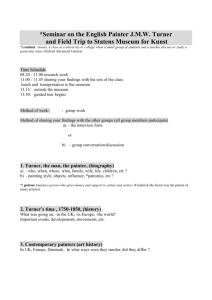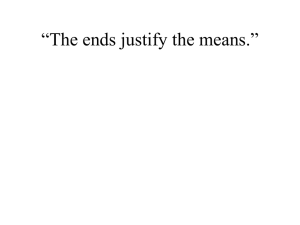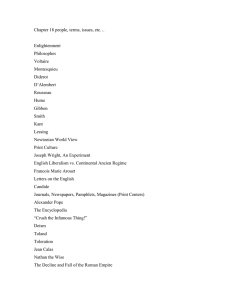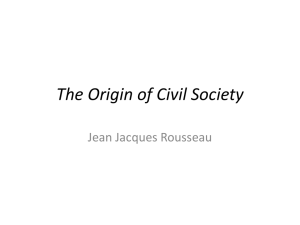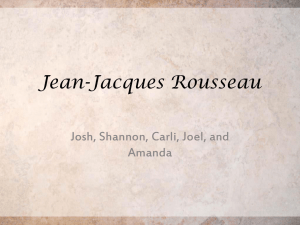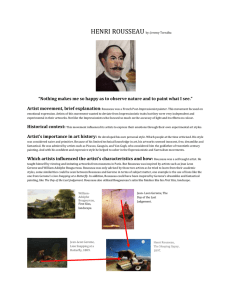Henri Rousseau ...
advertisement
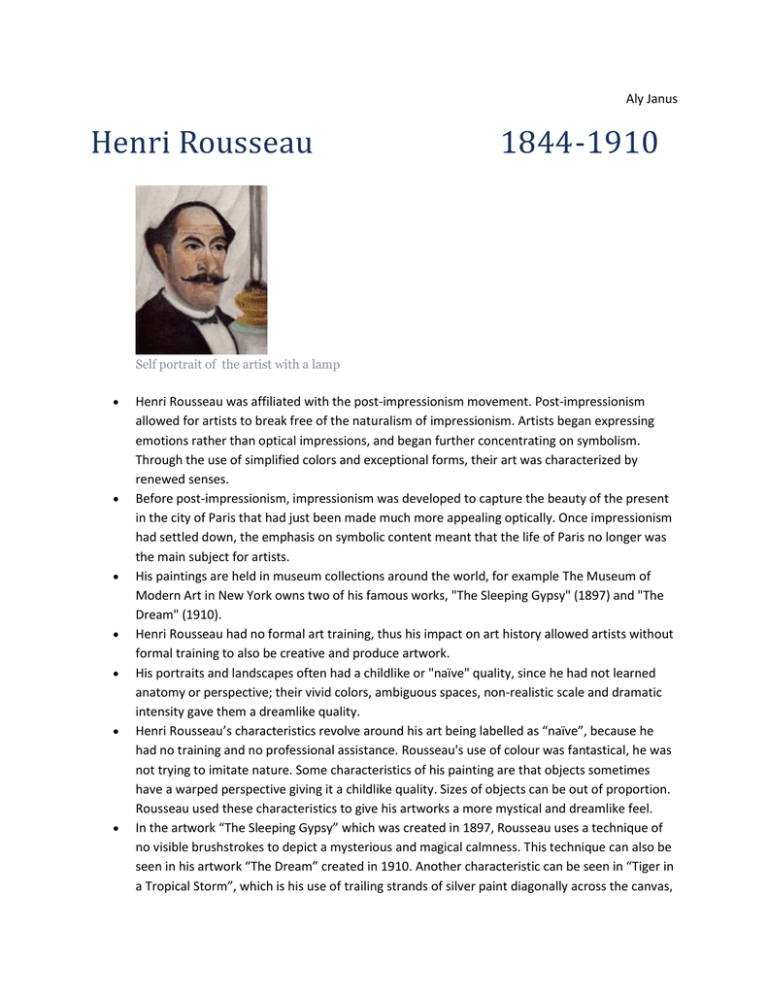
Aly Janus Henri Rousseau 1844-1910 Self portrait of the artist with a lamp Henri Rousseau was affiliated with the post-impressionism movement. Post-impressionism allowed for artists to break free of the naturalism of impressionism. Artists began expressing emotions rather than optical impressions, and began further concentrating on symbolism. Through the use of simplified colors and exceptional forms, their art was characterized by renewed senses. Before post-impressionism, impressionism was developed to capture the beauty of the present in the city of Paris that had just been made much more appealing optically. Once impressionism had settled down, the emphasis on symbolic content meant that the life of Paris no longer was the main subject for artists. His paintings are held in museum collections around the world, for example The Museum of Modern Art in New York owns two of his famous works, "The Sleeping Gypsy" (1897) and "The Dream" (1910). Henri Rousseau had no formal art training, thus his impact on art history allowed artists without formal training to also be creative and produce artwork. His portraits and landscapes often had a childlike or "naïve" quality, since he had not learned anatomy or perspective; their vivid colors, ambiguous spaces, non-realistic scale and dramatic intensity gave them a dreamlike quality. Henri Rousseau’s characteristics revolve around his art being labelled as “naïve”, because he had no training and no professional assistance. Rousseau's use of colour was fantastical, he was not trying to imitate nature. Some characteristics of his painting are that objects sometimes have a warped perspective giving it a childlike quality. Sizes of objects can be out of proportion. Rousseau used these characteristics to give his artworks a more mystical and dreamlike feel. In the artwork “The Sleeping Gypsy” which was created in 1897, Rousseau uses a technique of no visible brushstrokes to depict a mysterious and magical calmness. This technique can also be seen in his artwork “The Dream” created in 1910. Another characteristic can be seen in “Tiger in a Tropical Storm”, which is his use of trailing strands of silver paint diagonally across the canvas, to depict the rain, which is a technique inspired by the satin-like finishes of the paintings of William-Adolphe Bouguereau.
